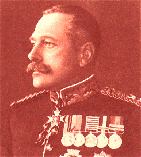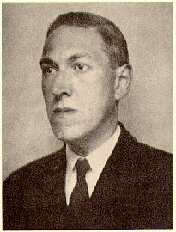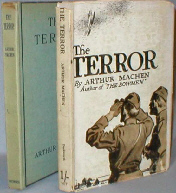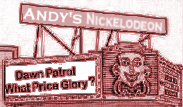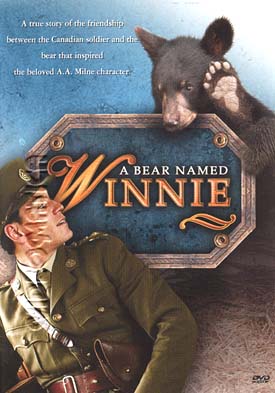
December 2005 |
Access Archives |
TRENCH REPORT: A happy holiday season to all our readers! Some old business and some new business: Congratulations to event organizer Bob Denison and the fabulous Mouaux's of Sonoma, California for the highly successful recent Armistice - Remembrance - Veterans Day celebration. . .Thanks to all of you who pointed out that last month's "Stormtrooper" photo was actually a Soviet soldier from the 1930s. I'm still too humbled to say more. . .Now the new business. The WFA-USA has announced their next Biennial WFA Battlefield Tour: Meuse-Argonne, Verdun, St. Mihiel, Mons and the Retreat from Mons for May 20 - June 2, 2007. Contact Pete Guthrie at for more information. (email). . .Also, we launch two new features with this issue. You readers have become so helpful sending news articles related to the Great War that you now have your own column, World War I Headlines. Thanks much and please keep up your good work. Also, welcome to our new columnist, University of Sussex Blogster Esther MacCallum-Stewart, who operates the outstanding Break of Day in the Trenches. Dr. M-S's column in the Trip-Wire will be know as: Base Details - World War I Culture Watch. Write and tell us what you think of these new segments. . .For all of you who like to revisit the immortal Christmas Truce of 1914, visit our special article for lots of material and links to other sites. (link). . .Finally, on behalf of the Great War Society, let me announce that the organization has started to compile a Roll of Honor, a listing of our relatives and others we find meaningful to us today who served in the First World War, so they will never be forgotten. Visit the Roll [we're just starting to build it] and see what it is about. (link) Members and friends of the Great War Society can nominate individuals. Just follow the simple format and send it to me in an email message with any photos as attachments. (email)
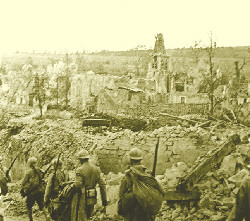
Craonnelle
|
|||||||||||||||||||||

| Special Feature WWI Historian & Original Thinker Basil Liddell Hart |
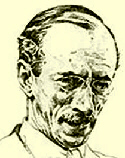 |
-
Liddell Hart and His Legacy
-
Liddell Hart Select Bibliography
- Maneuver Warfare in the 20th Century [Discusses L-H's influence]
Biography of Liddell Hart and Excerpts from "The Real War"
Quotations from Liddell Hart
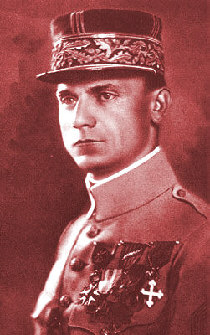
General Stefanik Milan Rastislav,
Aviator, French General, Czech Patriot
New at the Websites of the Great War Society and Our FriendsClick on Title to Access |
| At Great War Society Sites At the WFA-USA |
1. GWS Member Professor David Woodward has a new book to be released this spring, Hell in the Holy Land: World War I in the Middle East. It's available for pre-sale at the on-line sites.
2. Coming World War I films include: a French treatment of the Christmas Truce, Joyeux Noel, which has been selected as France's 2005 entry in the Academy Award's foreign language category (link); a film on the Lafayette Escadrille, Flyboys, that is in production, as is a yet-untitled Canadian Film on Passchendaele; and a film version of Mozart's The Magic Flute, set during WWI, announced by the industrious Kenneth Branagh.
3. Gregorii Rasputin fans AWAKEN! Agony, the over-the-top bio pic about the demonic Russian monk that was once banned in the Soviet Union, is now available from International Historic Films. (link)
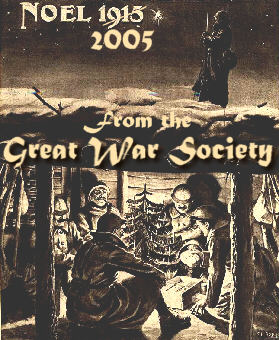

The Great War in the Background
GREAT WAR 2006 EVENT CALENDAR | |
|
Churchillian Society At the Pacific Union Club, San Francisco February 4 (email) | |
|
Bay Street Armoury, Officer's Mess At Victoria BC March 10-12 (email) | |
|
Baltimore, MD April 1 (email) | |
|
Popular Culture Newcastle Inst. for the Arts & Social Sciences March 31 - Apr. 2 (link) | |
|
Aurora, Colorado May 19-21 (link) | |
|
Hilton Garden Inn, Tampa North August 16 (link) | |
|
Email Response |
|

François Faber, former Luxembourgian Tour de France champion volunteered to serve with the French Foreign Legion since he had been born in France. While in a trench on the western front of World War I, Faber received a telegram saying his wife had given birth to a daughter. He cheered, giving away his position, and was immediately shot by a German sniper.
|
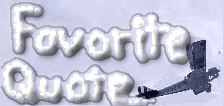
How the First Day on the Somme looked to a German Machine Gunner:
When the English started advancing we were very concerned; they looked as though they must soon occupy our trenches. We were amazed to see them walking, we had never seen that before. . .The officers were at the front. I noticed one of them was strolling calmly, carrying a walking stick. When we started firing we just had to load and reload. They went down in their hundreds. We didn't have to aim, we just fired into them.
Quoted in Machine Gun by Anthony Smith
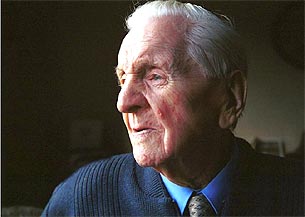 Mr. Alfred Anderson |
- Alfred Anderson, 109
- Member of Scotland's Black Watch and the last surviving participant in the Christmas Truce of 1914.
(link)
- Arthur Fiala,106
- Wisconsin's last surviving World War I veteran, 32nd Division of the AEF.
(link)
- Clare Laking, 106
- Private with the Canadian Field Artillery, 27th Battery, 4th Brigade.
(link)
- Kenneth Myers, 107
- Sailor on USS Oklahoma escorting President Wilson home from France.
(link)
- Victor Rudd, 104
- British Cavalryman who has lived in New Zealand for years. (link)
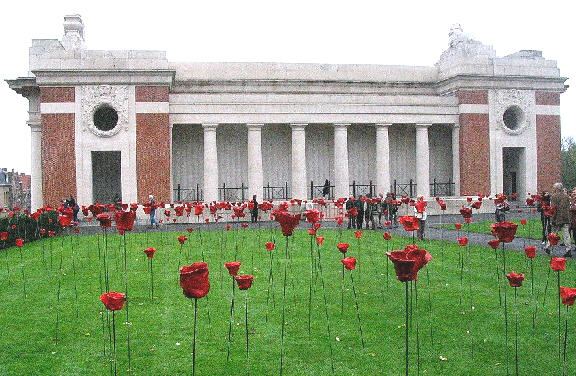
Menin Gate at Ypres
Armistice Day 2005

|
The Kinmel Park Mutiny of 1919
|
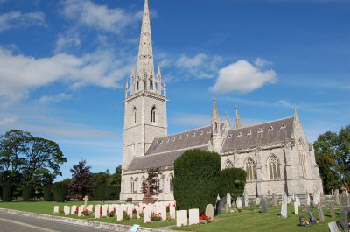
Village Church and Canadian Cemetery
The mutiny and riots that occurred in 1919 involving Canadian soldiers in the army camp known as Kinmel Park at Bodelwyddan, North Wales, Flintshire has been explained in many books. However, the main reason that led up to those actions taken up by Canadian soldiers barracked there after returning from the dreadful conditions of the First World War was the cancelling of the ships scheduled to take them home. This was the spark that ignited the indiscipline.
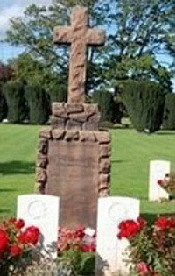 Canadian Memorial |
In the churchyard of Saint Mary's lie the Canadian soldiers who died at this camp, the majority from the flu epidemic. Included are the graves of four American citizens who served with the Canadian Army and a memorial to a nursing sister, age 26, who served with the Canadian Medical Corps. The memorial in the little cemetery reads:
Their name lives for evermore.
|
in the 21st Century |
This is a new feature for the Trip-Wire. We now have so many agents out there sending us material, it seems only right that we properly recognize them. For economy of space, they will be identified by their initials. Below you can check their full names. Just click on the headline to read the accompanying details.
- WWI Paintings Discovered in New York D.C.
- Meet WWI Vet Robley Rex of Kentucky D.C.
- Zimmermann Telegram Original Found B.R.
- WWI Graves Desecrated in France Anon.
- Entire Australian Official History of WWI Now On-Line A.S.

|
Images of the Great War Society Annual November 11th Event
|
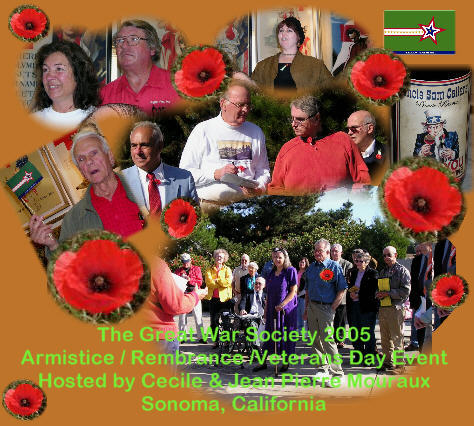
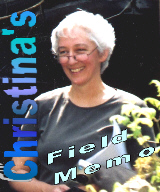 |
Upcoming 90th Anniversary of the Battle of Verdun
By Christina Holstein
With the 90th anniversary of the great battle's start fast approaching, much news is emerging regarding the commemorations at Verdun.
Before June 2006, a memorial will be built at Verdun to commemorate the Muslims who died for France during the Great War. A small memorial already exists close to the Ossuary, together with a marble plaque in the name of the Muslim Institute of Paris. The new memorial will cover approximately 100 sq. meters and will include a peristyle and a dome. President Jaques Chirac of France will be present for the inauguration in June 2006.
A Commemorative programme of events for the 90th anniversary of the Battle of Verdun has been published and includes:
21 February 2006
- Concert by Barbara Hendricks at Verdun Cathedral
- Illumination of the Douaumont Ossuary: sound and light show of the Battle of Verdun
- International conference at the World Peace Centre. Title: Verdun in the eyes of the world; Exhibition: 90 years of commemoration
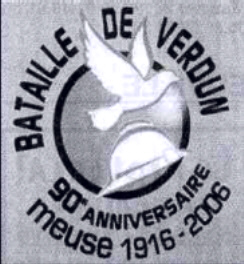
28-30 March
- Performance of a play entitled "Cris" by Laurent Gaudé at the Verdun theatre
- Exhibition entitled "La Grande Guerre en relief", based on stereoscopic pictures
22 - 25 June
- Concert by the Ensemble Musique Oblique at the Verdun synagogue in memory of the Jewish soldiers of Verdun.
- Peace Day, involving 1916 young people from France and the various countries that were involved in the conflict.
- Concert by the Paris Choir and Orchester.
- Performance of "Le Feu" by Henri Barbusse. This will be a one-man show performed in various parts of the Department of the Meuse
- There will be a theatrical homage to the colonial troops but I have no details.
- Plantation of cornflowers on the Voie Sacrée. This flower is the symbol of the "poilu".
- "The river of light" - 700,000 candles will be floated on the River Meuse to symbolize the casualties of the battle.
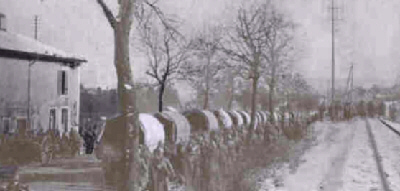
Voie Sacrée 1916
25 June
- Wreaths laid by the President of France and the German chancellor.
24 October
- Verdun Cathedral: Brahms' German requiem.
- Exhibition relating to stained glass windows in the Department of the Meuse dealing with patriotic themes.
General events
- Information panels and silhouettes of soldiers and trucks will be placed along the Voie Sacrée. The local newspaper at Verdun, "l'Est Republicain", also reports that access to the main sites on the battlefield will be free and even that hotels will offer a third night free to their clients (I've no further details on this).
- Finally, in 2007, visitors to Verdun will be able to take the high speed train (TGV East) from Paris, which will get them to the new station at Issoncourt, south of Verdun, in one hour. From there, a shuttle service will run to Verdun. I've no information about the shuttle service and Issoncourt station isn't completed yet.
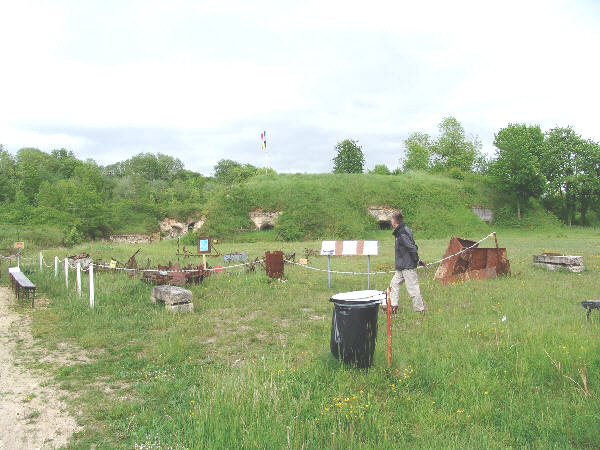
Ruins of Fort Troyon on River Meuse Heights
Held Out During First Battle of the Marne
Click Here to Visit War in a Different Light
Winnie was extremely tame. Parents could even place their children on her back for rides. A favorite activity was to give Winnie a drink of condensed milk mixed with corn syrup. Winnie lived at the zoo until 1934. In the last two years of her life she had cataracts and arthritis and suffered a stroke that partly paralyzed her. She was euthanized on May 12, 1934. 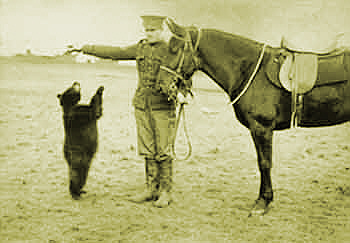 Early Photo of the FriendsThis is a delightful family film with only a brief battlefield sequence. It's well-acted, both by the humans and the bears. You feel there's a true warmth and friendship between Winnie (played by two cubs and a full-grown bear) and Harry. Gil Bellows plays Col. John Barret, the stern Chief Veterinary Officer who is won over by Winnie's warmth. David Suchet is General Hallholland, the often drunk commanding officer of the Canadian expeditionary force. Stephen Fry plays Mr. Protheroe, the cranky keeper at the London Zoo who likes animals more than children and reluctantly accepts the young Winnie as a temporary guest. Currently, in Winnipeg's Assiniboine Park there are two tributes to Winnie: a bronze statue of Captain Colebourn and Winnie, and an original oil portrait of Winnie-the-Pooh by the illustrator Ernest H. Shepard. 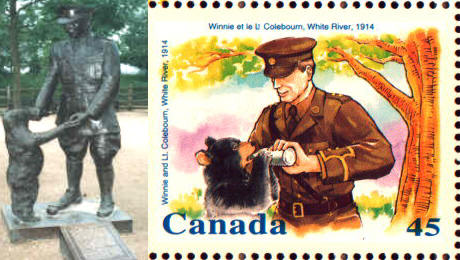 Friendship Remembered: Captain Colebourn and Winnie |
| The following are thanked for their contributions to this issue of the Trip Wire: Jim Folger, Anatole Sykley, Dianne Rooney, Lynna Kay Shuffield, Donna Cunningham, Bob Rudolph, Anne Steele, Christina Holstein, Matt Church, Esther MacCallum-Stewart, Andy Melomet, Sidney Clark, Len Shurtleff. Until next month, your editor, Mike Hanlon. |
Membership Information  Click on Icon |
SUBSCRIBE TO THE TRIP-WIRE (Or Send it to a friend.) (Or send us a comment on the TRIP-WIRE) CLICK HERE TO CONTACT US VIA EMAIL |
For further information on the events of 1914-1918
visit the Directory Page of |

